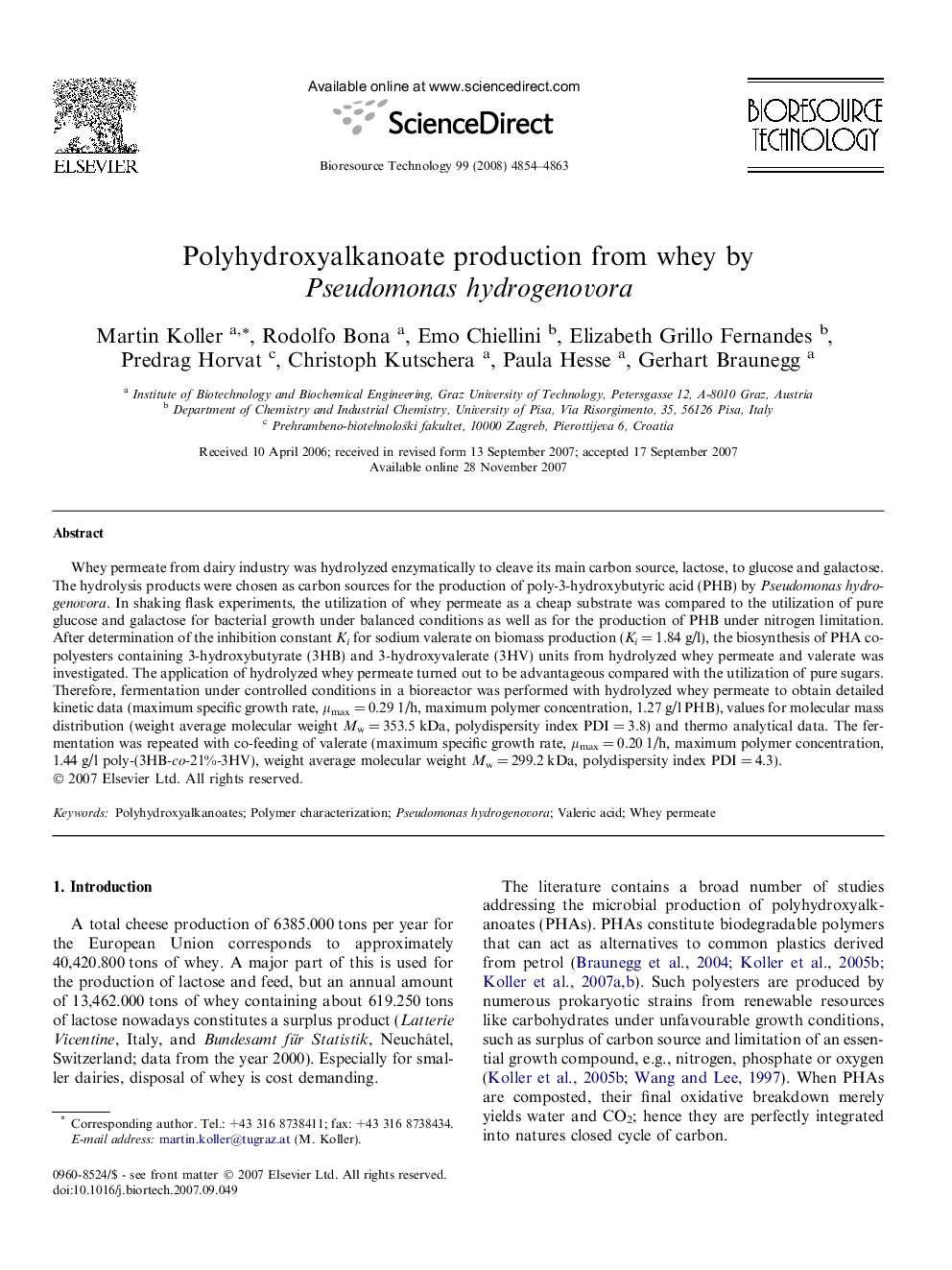| کد مقاله | کد نشریه | سال انتشار | مقاله انگلیسی | نسخه تمام متن |
|---|---|---|---|---|
| 685592 | 889044 | 2008 | 10 صفحه PDF | دانلود رایگان |

Whey permeate from dairy industry was hydrolyzed enzymatically to cleave its main carbon source, lactose, to glucose and galactose. The hydrolysis products were chosen as carbon sources for the production of poly-3-hydroxybutyric acid (PHB) by Pseudomonas hydrogenovora. In shaking flask experiments, the utilization of whey permeate as a cheap substrate was compared to the utilization of pure glucose and galactose for bacterial growth under balanced conditions as well as for the production of PHB under nitrogen limitation. After determination of the inhibition constant Ki for sodium valerate on biomass production (Ki = 1.84 g/l), the biosynthesis of PHA co-polyesters containing 3-hydroxybutyrate (3HB) and 3-hydroxyvalerate (3HV) units from hydrolyzed whey permeate and valerate was investigated. The application of hydrolyzed whey permeate turned out to be advantageous compared with the utilization of pure sugars. Therefore, fermentation under controlled conditions in a bioreactor was performed with hydrolyzed whey permeate to obtain detailed kinetic data (maximum specific growth rate, μmax = 0.29 1/h, maximum polymer concentration, 1.27 g/l PHB), values for molecular mass distribution (weight average molecular weight Mw = 353.5 kDa, polydispersity index PDI = 3.8) and thermo analytical data. The fermentation was repeated with co-feeding of valerate (maximum specific growth rate, μmax = 0.20 1/h, maximum polymer concentration, 1.44 g/l poly-(3HB-co-21%-3HV), weight average molecular weight Mw = 299.2 kDa, polydispersity index PDI = 4.3).
Journal: Bioresource Technology - Volume 99, Issue 11, July 2008, Pages 4854–4863